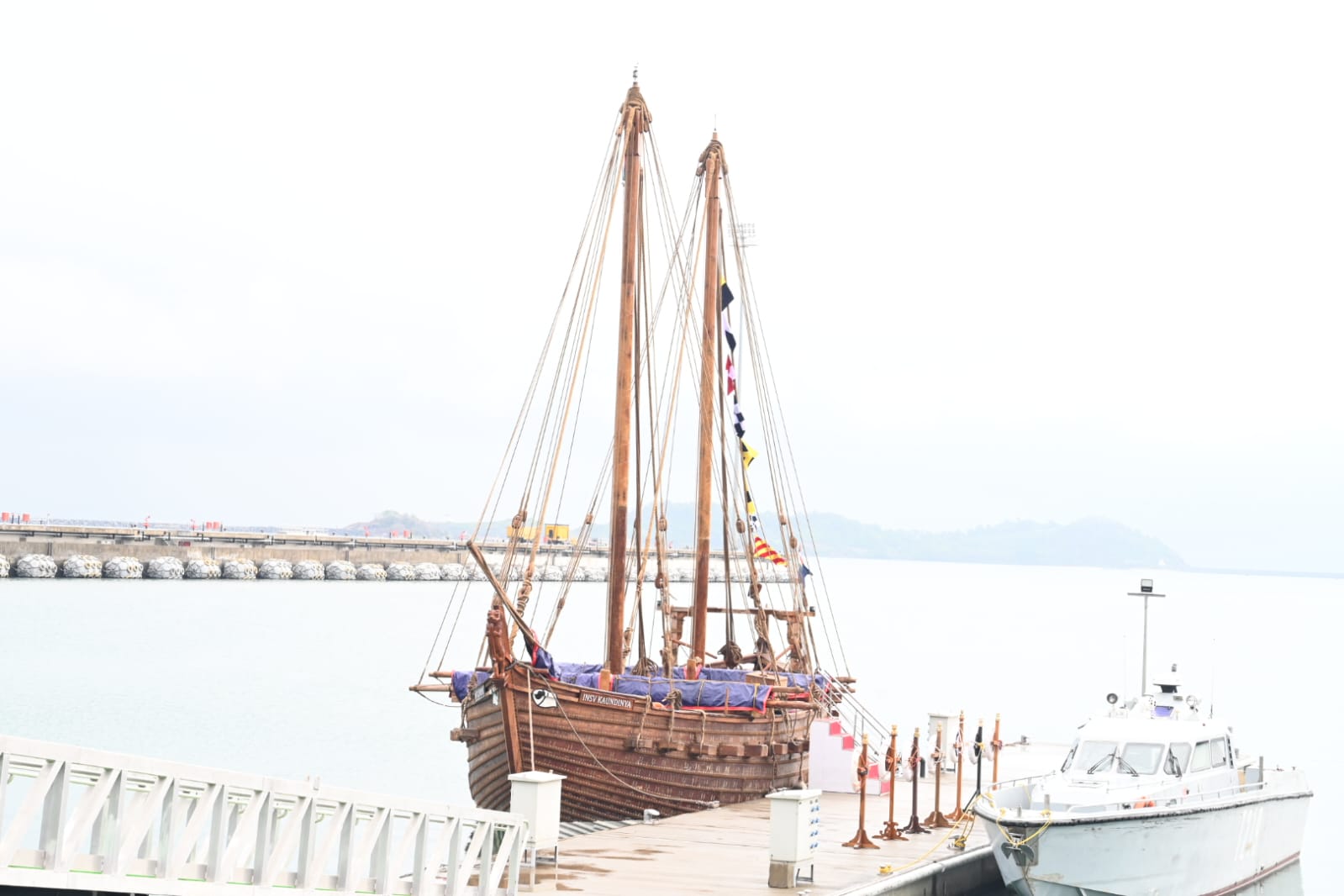INSV Kaundinya

- 22 May 2025
In News:
The Indian Navy formally inducted and named an ‘ancient stitched sail ship’ as the INSV Kaundinya at a ceremonial event held at the Naval Base in Karwar. INSV Kaundinya has been built based on a 5th century ship depicted in paintings seen in the Ajanta Caves.
What is INSV Kaundinya?
The INSV Kaundinya is a reconstructed ancient stitched ship, modeled after maritime imagery found in the Ajanta Cave murals. It represents India’s historical naval engineering capabilities and cultural exchanges across the Indian Ocean.
Construction and Origins
- The project was initiated in July 2023 as a collaborative effort between the Ministry of Culture, the Indian Navy, and Hodi Innovations.
- The ship was built using traditional stitched shipbuilding methods, where wooden planks are lashed with coir ropes and coconut fibre, sealed with natural resin—a method that avoids the use of nails or metal fasteners.
- The design took inspiration from 5th-century depictions in the Ajanta caves, interpreted through archaeological analysis, hydrodynamics, and naval architecture, as no original ship designs from that era have survived.
Planned Expedition
- INSV Kaundinya is slated to retrace an ancient maritime trade route in 2025, sailing from Gujarat to Oman, highlighting India's historical seafaring ties with West Asia.
Cultural Symbolism
- The ship’s sails are embellished with traditional motifs such as the Gandabherunda (a two-headed mythical eagle) and Sun iconography, symbolizing resilience and energy.
- A SimhaYali (lion-dragon hybrid) figure adorns the bow, a nod to Dravidian maritime symbolism.
- The deck features a Harappan-style stone anchor, linking the vessel to India’s ancient Indus Valley maritime practices.
- Named after Kaundinya, an ancient Indian voyager known for establishing early trade and cultural links with Southeast Asia, the ship reflects India's historic role in transoceanic interaction.
Ajanta Cave Paintings: Artistic Reference
- Located in Maharashtra, the Ajanta Caves date from the 2nd century BCE to the 6th century CE, renowned for some of the oldest surviving Indian mural art.
- These murals use the tempera technique—painting on dry plaster with natural dyes such as red ochre and black.
- They largely portray Buddhist narratives, including Jataka Tales, and scenes from the Buddha’s life, interwoven with nature and decorative elements.
- The paintings emphasize emotional expression, spiritual depth, and distinctive anatomical stylization.
